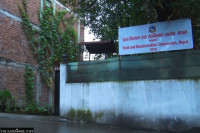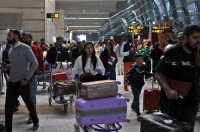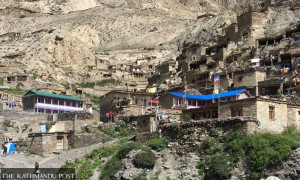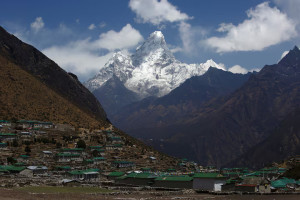National
Banke measles outbreak spreads to nearby districts
Officials say they are preparing to start a mass vaccination drive against the deadly contagion in the affected areas.
Arjun Poudel
A measles outbreak that started some four weeks ago in Nepalgunj Sub-metropolitan City has now spread to several districts of Lumbini and Karnali provinces raising the concerns of people and the health authorities.
Apart from multiple local units of Banke district, cases of the deadly virus have been reported from Bardiya and Dang districts in Lumbini Province, and Surkhet, Mugu and Rukum West districts of Karnali Province, a source at the Ministry of Health and Population confirmed.
“We have been preparing for a mass vaccination drive in the affected and the adjacent local units,” said Dr Bikash Devkota, secretary at the Ministry of Health and Population of Lumbini Province. “We are also mulling over expanding the mass vaccination drive throughout the affected districts.”
Health authorities in Karnali Province confirmed that at least six measles cases have been confirmed in the province as of Thursday evening.
“We have sent swab samples of dozens of suspects for laboratory tests,” said Rabin Khadka, director at the Health Service Directorate of Karnali Province. “Positive cases of infection could increase in the coming days.”
Measles is a contagious disease transmitted through fluids from the nose, mouth or throat of infected persons and through the air. The virus infects the respiratory tract, and then spreads throughout the body. It remains a big cause of death among young children globally, despite the availability of a safe and effective vaccine, according to the World Health Organisation (WHO).
Khadka informed that the contagion has also been reported from a camp of displaced people, who migrated from Dailekh district after a landslide in the monsoon.
“Two cases of infection have been confirmed in Birendranagar Municipality and two in Chingad Rural Municipality of Surkhet district and one each from Mugu and Rukum West," said Khadka. “Sporadic cases of infection have been reported from other local units as well.”
Health authorities in the province are also preparing to start vaccination drives in the affected areas. For that, data of children aged between six months to 15 years have been collected.
Health Ministry officials informed that they are preparing to hold discussions with stakeholders next week to discuss whether to extend mass vaccination drives against measles in the districts having a low vaccine coverage.
“The severity of the infection from the virus has lessened by vaccination,” said Devkota, the health secretary of Lumbini Province.
The outbreak of the measles virus in Nepalgunj Sub-metropolitan City has spread to Kohalpur Municipality, Narainapur Rural Municipality, Khajura Rural Municipality and Duduwa Rural Municipality.
Low vaccination coverage, internal migration, lack of awareness of the importance of vaccines and government apathy are reasons given for the regular outbreaks of measles in the districts, according to health experts.
Officials say most measles cases have been reported among the marginalised and minority religious communities—Muslims and Catholics—as well as other backward groups, where the level of awareness of regular immunisation is low.
Officials said one death and 292 cases of infection had been reported until Wednesday evening in Banke district only. They also conceded that there could be hundreds of other cases in the communities since not all cases get reported.
Measles was endemic in Nepal. In the past, hundreds of children would die every year in the country from the potentially fatal contagion.
Routine measles vaccinations in Nepal began in 1979, starting with three districts. The campaign was extended nationwide after 10 years. Despite measles being included on the regular immunisation list, an average of 90,000 cases were recorded every year, from 1994 to 2004.
Nepal had committed to eliminating measles by 2023. To declare measles as eliminated, the number of cases should be less than five per one million people throughout the year.




 24.12°C Kathmandu
24.12°C Kathmandu















